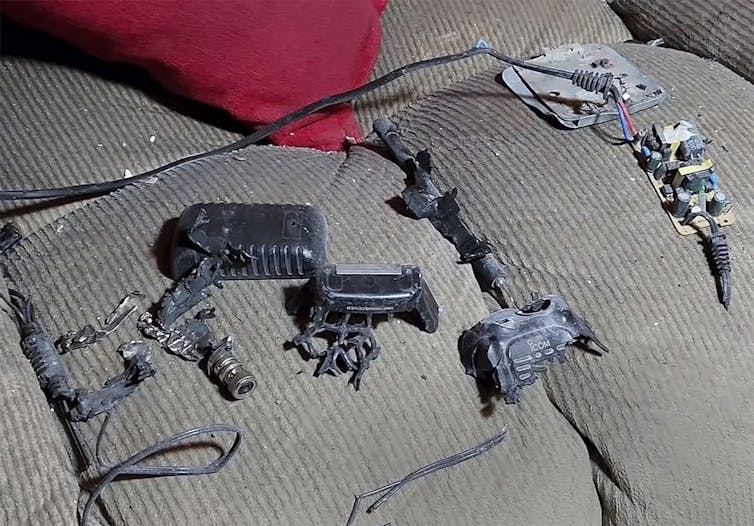
In a presidential race in which both major party candidates are kowtowing to law enforcement, don’t expect any candor about the perils that politicians have unleashed. To serve and protect, police are allowed to slander and destroy. Cops in many states and localities have acquired the right to lie about their shootings, searches, and practically anything else. Police have routinely planted drugs, guns, and other evidence to incriminate innocent people, while police labs have engaged in wholesale fraud blighting tens of thousands of lives.
Supreme Court rulings turned a trickle of police perjury into a torrent. In 1967, the Supreme Court, in the case of McCray v. Illinois, gave policemen the right to keep secret the name of their “reliable informant” they used to get search warrants or target people for arrest. Law professor Irving Younger observed at the time: “The McCray case almost guarantees wholesale police perjury. When his conduct is challenged as constituting an unreasonable search and seizure … every policeman will have a genie-like informer to legalize his master’s arrests.” The Supreme Court created a judicial playing field on which police were the only witnesses who can safely lie.
In 1983, the Supreme Court ruled that government officials are immune from lawsuits even when their brazen lies in court testimony resulted in the conviction of innocent people. The court fretted that “the alternative of limiting the official’s immunity would disserve the broader public interest.” Honest government was not one of the “broader public interests” the court recognized that day.
In 1992, Myron Orfield, a Minnesota state representative and University of Minnesota law professor, conducted a confidential survey of Chicago judges, prosecutors, narcotics agents, and public defenders on Fourth Amendment issues. One Chicago prosecuting attorney observed that “in fifty percent of small drug cases [police] don’t accurately state what happens.” Twenty-two percent of Chicago judges surveyed reported that they believed that police are lying in court more than half of the time they testify in relation to Fourth Amendment issues; 92 percent of the judges said they believed that police lie at least “some of the time.” Thirty-eight percent of the Chicago judges said they believed that police superiors encourage policemen to lie in court. One judge did not even know how perjury was defined under the Illinois Criminal Code. After Orfield read him the technical definition, the judge replied: “Then there is sure a hell of a lot of perjury going on in this courtroom.”
In 1994, the Mollen Commission reported that “the practice of [NYPD] police falsification in connection with such arrests is so common in certain precincts that it has spawned its own word: ‘testilying.’” Federal appeals court chief judge Alex Kozinski observed in 1995: “It is an open secret long shared by prosecutors, defense lawyers and judges that perjury is widespread among law enforcement officers.” Former San Jose, California, police chief Joseph McNamara observed that “hundreds of thousands of law-enforcement officers commit felony perjury every year testifying about drug arrests.”
In Tulia, Texas, Tom Coleman, an undercover cop on the federally funded Panhandle Drug Task Force, carried out drug stings in 1999 that resulted in the arrests of 46 people — equal to 10 percent of the black population of the town. There were no independent witnesses to back up Coleman’s accusations of pervasive drug dealing in the low-rent farming community. As United Press International noted, Coleman “made no video or audio recordings during his 18-month investigation. No drugs were found during the drug sweep and later he said his only notes were scribbled on his leg.”
But his leg and his word sufficed for mass arrests, including 12 people sentenced to prison who had no prior criminal record. “Dozens of children became virtual orphans as their parents were hauled to jail. In the coming months, 19 people would be shipped to state prison, some with sentences of 20, 60, or even 99 years,” the Village Voicereported. The NAACP of Texas denounced the crackdown as “the ethnic cleansing of young male blacks of Tulia.” For his exploits, Coleman received the Texas Lawman of the Year award, presented by Texas Attorney General (and future U.S. senator) John Cornyn. Defense lawyers and civil-rights activists eventually exposed Coleman’s vast frauds. Gov. Rick Perry pardoned 35 convicts who had been wrongfully tarred by his accusations, but only after some of them had spent four years in prison. Coleman was later convicted of perjury but was sentenced only to probation.
Almost a thousand people have seen their convictions overturned in recent decades in cases that involved perjury or false reports by police or prosecutors. A 2018 New York Times investigation of police lying revealed “an entrenched perjury problem several decades in the making that shows little sign of fading.” More than 100 NYPD “employees accused of ‘lying on official reports, under oath, or during an internal affairs investigation’ were punished with as little as a few days of lost vacation,” the New York Civil Liberties Union reported in 2018.
It’s a small step from fabricating guilt on the witness stand to creating guilt by planting evidence. Many police shootings have been exonerated by “throwdown” guns carried for emergency frame-ups. In 2001, a federal investigation resulted in the arrest of 13 Miami police connected to fabricating evidence or planting guns at the scene of three people who the police unjustifiably killed. In 2018, eight members of the Baltimore Gun Trace Task Force were convicted for planting guns on police shooting victims and other abuses. Police carried toy guns in their glove compartments or kept BB guns in their trunks to place at the scene of police shootings that might otherwise look like murder. More than 800 court cases were dismissed or overturned because of the Gun Trace Task Force’s crime spree.
That scandal percolated for years because Maryland treats planting evidence as the equivalent of jaywalking. A Baltimore policeman was convicted in 2018 of “fabricating evidence in a case in which his own body camera footage showed him placing drugs in a vacant lot and then acting as if he had just discovered them.” A man was jailed for six months for those drugs before the charge was dropped. The policeman kept his job because, as the Baltimore Sunexplained: “Under Maryland law, officers are only removed automatically if convicted of a felony. Fabricating evidence and misconduct in office are both misdemeanors.” An ACLU lawyer groused that he “cannot imagine a more screwed-up, idiotic way of trying to manage a police department or any other public office” than continuing to employ a cop convicted for fabricating evidence.
Bogus drugs produce more scandals than police throwdown guns. In 2019, Jackson County, Florida, sheriff’s deputy Zach Wester was charged with 50 counts of racketeering, false imprisonment, fabricating evidence, and drug possession for framing more than a hundred motorists he stopped. Wester would pull cars over for crossing the center line and then plant baggies of narcotics in their vehicles. As Reason reported: “Wester kept unmarked bags of marijuana and methamphetamines in the trunk of his patrol car, manipulated his body cam footage, planted drugs in people’s cars, and falsified arrest reports to railroad innocent people under the color of law. His victims, many of whom had prior records or were working to stay sober, had their lives upended. One man lost custody of his daughter.” Wester’s perfidy exceeded his mastery of his body cam, and his videos undid him. He was sentenced to 12 years in prison for planting drugs.
While planting drugs usually involves a smattering of victims, Massachusetts shattered all records. In 2012, Massachusetts State Police drug lab chemist Annie Dookhan was arrested for falsifying tens of thousands of drug tests, “always in favor of the prosecution,” as Rolling Stone reported. Dookhan would add narcotics to tests which came back negative or would boost the weight so that a person could be convicted of drug dealing instead of mere possession. Her zealotry knew no bounds, such as the day “she testified under oath that a chunk of cashew was crack cocaine.” Dookhan’s brazen lab frauds went unnoticed even though she routinely certified samples as illicit narcotics without ever testing them. Supervisors marveled at her productivity, and colleagues called her “Superwoman.”
Five months after the Dookhan scandal broke, another Massachusetts state lab chemist, Sonja Farak, was arrested at home and charged with tampering with evidence as well as heroin and cocaine possession. The state Attorney General’s office quickly announced that it “did not believe Farak’s alleged tampering would undermine any cases.” Governor Deval Patrick assured the media: “The most important take-home, I think, is that no individual’s due process rights were compromised” by Farak’s misconduct.
No such luck. Farak had personally abused narcotics from her first day on the job in 2004 — sometimes even cooking crack cocaine on a burner in the lab and snorting meth and cocaine in courthouse bathrooms when she was called to testify. She detailed her abuses in hundreds of pages of diaries. But the state attorney general’s office insisted that she had only started consuming narcotics on the job a few months before her arrest, and they blocked all efforts to expose the full extent of Farak’s abuses. Massachusetts government officials could not be bothered to rectify the unjust convictions. Slate reported in 2015 that “district attorneys take the position that … prosecutors have no special duty to notify defendants that their convictions might have been obtained with evidence that was falsified by government employees.” Most of the victims could not afford lawyers to challenge their convictions.
More than 50,000 convictions were overturned, and the ACLU hailed “the largest dismissal of criminal cases as a result of one case in the history of the United States of America.” Hundreds of convicts were released from prison. But as Anthony Benedetti of the Committee for Public Counsel Services observed, “the damage has been done. Jobs have been lost, people have been unable to get jobs, housing has been lost, some people have been deported.” More than 20 states have had crime lab scandals since the turn of the century.
Police unions have finagled legislation that routinely enables cops to trample the truth after they shoot civilians. Maryland police were protected by a “Law Enforcement Officers Bill of Rights” that prohibited questioning a police officer for 10 days after any incident in which he used deadly force. In Prince George’s County, Maryland, “a lawyer or a police union official is always summoned to the scene of a shooting to make sure no one speaks to the officer who pulled the trigger,” the Washington Post reported. Union lawyers were kept busy because that police department had the highest rate of shooting civilians in the nation. A 2001 Washington Post investigation revealed: “Between 1990 and 2001 Prince George’s police shot 122 people…. Almost half of those shot were unarmed, and many had committed no crime.” All the shootings, including those that killed 47 people, were ruled “justified.” The Maryland legislature purportedly repealed the Law Enforcement Officers Bill of Rights law in 2021, but the replacement law was quickly exploited to cover up police abuses. Yanet Amanuel of the ACLU of Maryland groused: “Every time there is an opportunity to give the community control of the police, Maryland Democrats at every level who say they support police accountability squander it by backing amendments pushed by the Fraternal Order of Police (FOP).”
Thirteen other states have similar “law enforcement bills of rights” that give sweeping privileges to police accused of crimes, including automatic delays before they have to answer any questions about their shootings. The Florida Law Enforcement Officer Bill of Rights entitles police to receive “all witness statements … and all other existing evidence … before the beginning of any investigative interview of that officer.” In a 2019 George Washington Law Review article on delays in interviewing police who shoot citizens, one police chief commented that “showing evidence in advance allows [police] to tailor their lies to fit the evidence.” Another police chief observed that that process simply gives police suspects “time to fabricate a better lie.”
In July 2023, the NYPD Civilian Complaint Review Board agreed to permit police to “watch surveillance footage, bystander videos and other video recordings [including body cam] that investigators plan to ask them about before giving their versions of what happened,” Gothamist reported. Police received that special treatment even though they had made almost 150 false or misleading official statements to the review board since 2020.
Many of the procedures discussed in this article exemplify how truth doesn’t have a snowball’s chance in hell against police unions. Regardless of how many brazen coverups occur, politicians will continue providing favored treatment in return for the cash and votes that unions deliver. Regardless of how many thousands of innocent citizens are slandered or worse, any resulting testimony or accusations will continue to be “close enough for government work.”
This article was originally published by the Future of Freedom Foundation


















